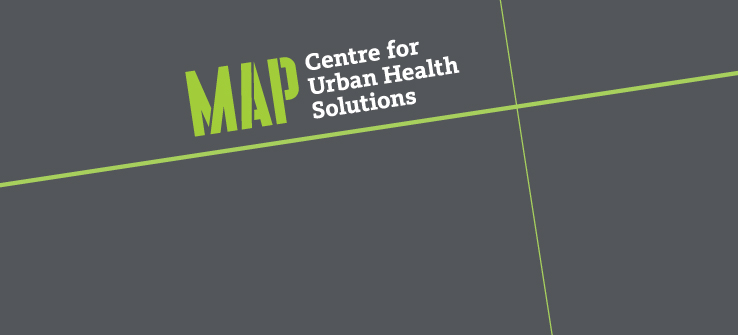The Ontario Community Health Profiles Partnership (OCHPP) and Ontario Health, Central Region (OH) are very excited to announce the creation of 194 new local areas in Central Region!
Central is one of six new Ontario Health Regions established from the previous 14 Local Health Integration Networks (LHINs). OH Central is comprised of four former LHINs: Central, Central West, Mississauga Halton and North Simcoe Muskoka.
Creating 194 Local Areas
The OCHPP team, located at MAP Centre for Urban Health Solutions under the leadership of Rick Glazier, PI, and OH team have been working hard over the last year to develop local areas for the vast area covered by OH Central Region. The new 194 local areas comprise over four million people who reside in the fast-growing and diverse communities from Mississauga to Huntsville and Orangeville to Markham. (As a note, some jurisdictions refer to small areas as neighbourhoods but OH refers to theirs as local areas.)
Why Local Areas?
Local-level data can tell you a lot about the characteristics of a community, what shapes health care utilization, and where the biggest opportunities exist for improving health. In most regions, health and social data are available at a national, provincial, and municipal level to inform planning. However, it’s easy for the needs of local communities to get ‘averaged out’ when planners do not have access to local-area data. Neighbouring communities can have drastically different pictures of health and well-being, despite their close physical proximity. These differences are only visible in the data when we are able to break down the information and look at each local area separately.
The Process
The OCHPP and OH teams used an array of spatial reference and census data when developing local areas. Geographical information system (GIS) tools and methods were used to process data and ultimately define the new areas. Specifically, standard Census geographies were used as the building blocks for the new areas. Using a standard approach often makes analyzing and reporting data more accessible and efficient. In several instances, the team tweaked boundaries in order to ensure equal distribution of populations. An understanding of local communities, the use of existing local areas along with natural and constructed boundaries also informed the process.
The process also involved the testing and validation of populations within areas. We created our areas with population sizes that range from a minimum of 7,000 to a maximum of 30,000 people so that health outcomes would be reportable thus reducing the risk that cells with low counts would prohibit release of data due to privacy restrictions. Other factors included sufficient population size to allow for stratification by age group and sex as well as considering the stability of data over time and ability to account for changes in population dynamics within an area.
Important consideration was given to ensuring that areas identified as First Nations or Indigenous communities would not have their data reflected in the outcomes without their permission, owing to the lack of partnership agreements in place with these communities and to respect the principles of OCAP. These areas are identified in the local areas but no data will be reported.
Especially important is the northern reach of these local areas. Health system planning is crucially important to places that might historically and currently have difficulty accessing healthcare. By reporting health and socio-demographics at these small areas, planners will have additional tools to demonstrate gaps in care within their jurisdictions.
OCHPP: Partners and Public Website
Perhaps the best part of this collaboration is that all of the local area data (and any accompanying) maps will be available to anyone via the OCHPP website.
OCHPP partners include provincial and local governments, public health professionals, community health providers and researchers. We work together to build community capacity to use health information. One way we do this is by providing local area health and socio-demographic data in easy to use tables and maps on a freely-accessible website.
OCHPP partners contribute in many different ways but all share a common goal of using data to help inform and implement policies that reduce health inequities in Ontario.
We look forward to continuing to populate and add data for Ontario Health Central Region over the next year and beyond. See the Ontario Health Central Region page and local area data here: https://www.ontariohealthprofiles.ca
This project is one more step in the OCHPP goal of “mapping Ontario one small area at a time.” We are honoured to have worked closely with OH Central on this important and equity-based project.
For more information or to find out about methods used to create the new areas please contact: healthprofiles@smh.ca

